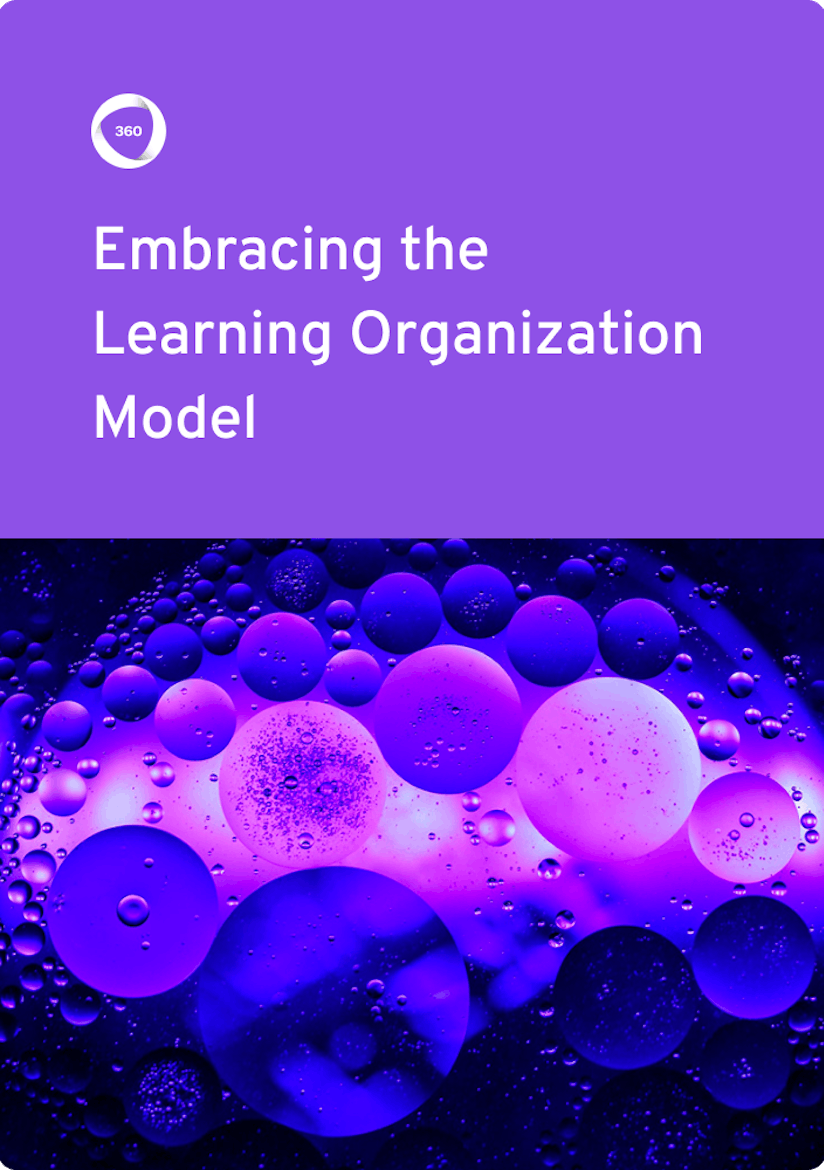Starting a new role in L&D is tough. Starting a new role in L&D at a fast-growing scale-up is even tougher. You need to set your roadmap, secure buy-in, and show results, all in a fast-paced environment where the only constant is change.
Julien Martino, Head of Talent and People Development at Malt and L&D Collective member, knows the feeling. Almost a year into the job, Julien sat down with us to share his experience scaling Malt’s learning and development program. He outlines the five steps he took to help turn Malt into a Learning Organization.
This approach is one that any L&D leader can take, especially those working in a start-up or scale-up environment, or those looking to transform their company into a Learning Organization. The first step? Aligning with the executive team.
1. Align with leadership: HR isn’t just about recruitment
When Julien joined Malt last August, the overwhelming focus in the HR team was on recruitment. The strategy was heavily focussed on hiring, but there was a strong desire to scale and enhance their learning and development capabilities.
To a degree, of course, this makes sense—the company is scaling fast, and what was a 200-person organization back when Julien joined is set to top 600 employees by the end of the year. But Julien had to ensure that there was adequate buy-in for Learning and Development programs. He needed to educate and align with leadership on the very tangible, business-oriented benefits of investing in employee learning. In other words, he wanted to help turn Malt into a Learning Organization.
Without executive buy-in, it’s difficult for any L&D professional to make much headway, especially if their organization doesn’t have any existing L&D foundation. But to prove his business case, Julien needed hard and fast numbers—hypothetical arguments weren’t going to cut it. So, he turned his attention to a project that would help him demonstrate the business-critical impact of L&D: a pilot program.

Learn how to become a true Learning Organization
By providing your contact info, you agree to receive communications from 360Learning. You can opt-out at any time. For details, refer to our Privacy Policy.
2. Prove your argument with a pilot training program
Running a pilot program is an excellent way to make a business case to upper management that L&D can move the needle on critical metrics, and therefore win the budget and buy-in needed to scale an L&D program across an organization.
The ideal department for this type of program, as was the case at Malt, was sales. “It’s quite easy to make the link between sales efficiency and training,” explains Julien, “and then to demonstrate the positive effects of this efficiency on the business’s bottom line.” Julien was able to run the numbers and show that the training the sales department received helped demonstrably improve their efficiency, leading to better revenue figures.
But this wasn’t the only positive effect of launching L&D programs. Attrition rates—the number of employees that leave the company—were lower in the sales department, which at the time was the only division to receive this kind of training. “It’s true that you can’t isolate training as the only factor positively impacting attrition, but you can start to connect the dots and make the case that providing learning opportunities to employees increases loyalty,” says Julien.
In fact, that’s what employees themselves have been telling the company; Malters’ second-biggest wish, when asked during employee surveys, is more learning and development opportunities. It’s not a big stretch to say, then, that providing quality L&D courses has a positive effect on employee retention.
The takeaway for any L&D professional looking to build out their program? Prove your business case with data. Think about how you can prove the impact of your roadmap on business-critical metrics like revenue or employee attrition, and design a low-risk pilot program you can complete to prove your point. Then, you can make the case for rolling out similar projects throughout the business.
Of course, you’re always going to have to prove the ROI of these initiatives, which is why Julien also decided to reverse the traditional training model by looking to in-house subject-matter experts for training.
It’s quite easy to make the link between sales efficiency and training, and then to demonstrate the positive effects of this efficiency on the business’s bottom line.
3. Reverse the traditional training model
“For many L&D professionals, and especially in France, organizing training means contacting an external training provider and setting up a three-day onsite session,” says Julien. But this is hardly the most effective way to transmit knowledge. Instead, Julien wanted to flip the usual model on its head, and opt for a peer-driven learning model.
“We have an abundance of in-house subject-matter experts at Malt that have a wealth of useful know-how. If we can tap into that institutional knowledge, we can save a lot of money compared to relying only on external trainers.”
“All you need is a few hours of people’s time—and it’s a lot easier to get executive buy-in for that, versus a giant invoice. Not to mention the fact that contextual training based on in-house expertise is always going to be more relevant than someone training us who’s external to the business.”
A perfect example of peer learning at work is the need for Malt’s sourcing team to beef up their technical expertise. As a freelancer marketplace, Malt offers to match clients with the perfect freelancer for their project. This would be a job for Malt’s sourcing team. However, this often means the team is taking briefs from clients on very technical topics—for instance, they might need to find a web developer with just the right technical expertise, in the right coding language.
Not everyone on the sourcing team has the kind of in-depth knowledge to easily find the perfect candidate for all their clients. But instead of hiring an external trainer to host a session on coding languages to address this learning need, Malt prefers to ask its own technical teams to share their knowledge. “Aside from the efficiency perks, what’s great about this approach is that those who volunteer to teach a course feel validated and recognized by the company. It’s a real morale booster.”
Julien’s roadmap includes formalizing these kinds of learning experiences into learning academies.
If we can tap into that institutional knowledge, we can save a lot of money compared to relying only on external trainers.
4. Create academies to upskill from within
From the get-go, Julien decided to build his L&D program around peer-led, collaborative learning. They use the 360Learning platform to build, iterate on, and share courses authored by Malt’s own employees.
“The idea is to launch these academies in three phases,” explains Julien. “Phase one ensures everyone within a division knows exactly who does what. Phase two centers around upskilling and reskilling within a department. Phase three opens up the learning to pass on knowledge between departments.”
Here’s what that process looks like in action. After Malt’s CMO came to Julien saying that she needed a quick solution to help upskill her team, they decided to give this three-phase methodology a go.
As a first step, each member of the marketing team created a quick video explaining their job function. This ensured everyone on the team was on the same page, and knew who to go to for what. Then, they focused on the upskilling aspect—each team member would create courses to help their colleagues develop new skill sets. For instance, Mary might create a course on SEO best practices to share with Derek, while Derek would create a course on how to shoot a client video for Arjuna.
The plan for phase three is for the marketing team to tweak these courses to educate the entire company on these skills. As Julien explained, “for this part, we’ll need to be more pedagogical than in the second step, since the team won’t be talking to fellow marketers anymore, but to people who may have zero experience in that field.”
In the long-term, the idea is for each department to create their own academy and go through each of the stages, to elevate Malt to the status of a true Learning Organization. But for this to work, Julien will need to identify the right stakeholders and build a learning infrastructure.
The idea is for each department to create their own academy and go through each of the stages, to elevate Malt to the status of a true Learning Organization.
5. Create the right infrastructure
When it comes to tools, Malt relies on 360Learning for their peer-driven learning academies, and Notion for knowledge management. To build up the academies in the way outlined above, you need to identify the right project manager for each initiative.
“By the end of 2022, Malt will hit 600 employees—even today, with 350 Malters, it’s impossible for me to know who has what deep skill sets,” says Julien. Instead, he intends to nominate project leaders who can coordinate course creation and help identify the subject-matter experts to help create material.
“Even though it doesn’t take up much of people’s time, you still need to ensure their contributions are regular,” he adds. “Agree with your project manager to set aside 10% of their workweek on building these programs, instead of just an hour here and there. This will help keep things moving along.”
Agree with your project manager to set aside 10% of their workweek on building these programs, instead of just an hour here and there.
Takeaway
For any L&D professional starting a new role, you need to gain executive buy-in by proving your point with data and evidence. Then, you can scale your initiatives and roll out more expansive projects. Utilizing your own in-house experts is an excellent way to keep costs down, engagement high, and courses relevant. Don’t forget to decentralize the process by nominating project leads that can help you scale your program.
Want more insights like this from fellow L&D leaders? Be sure to join the L&D Collective, here.



